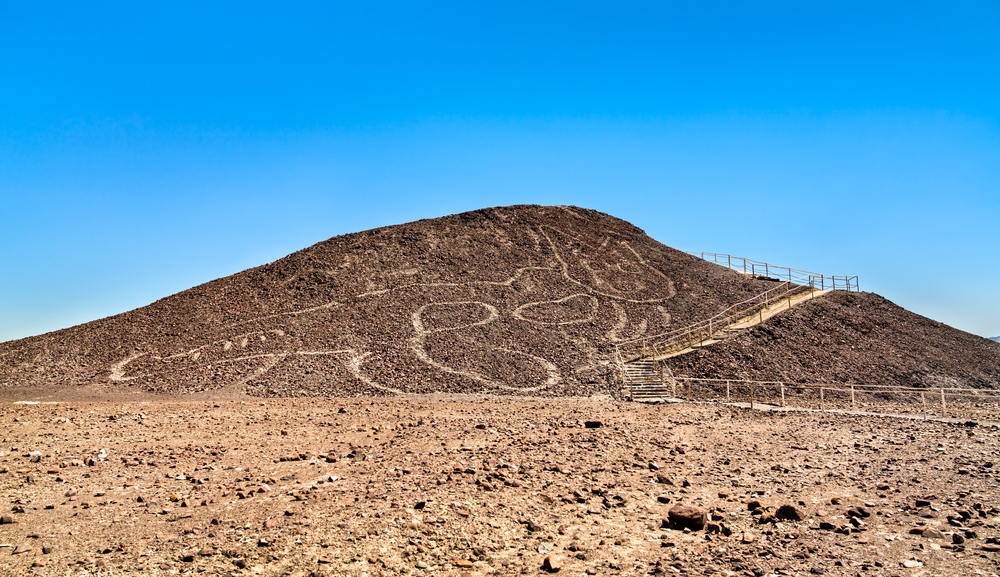In a quiet corner of southern Peru, archaeologists stumbled upon a remarkable find that had been hiding in plain sight for more than two millennia. During routine maintenance and conservation efforts within the Nazca Lines heritage zone, a massive cat figure carved into a desert hillside emerged from obscurity. This 2,000-year-old geoglyph, measuring approximately 37 meters in length, adds a new chapter to the story of one of the world’s most enigmatic archaeological landscapes.
The feline figure, with clearly defined ears, a rounded body, and a long striped tail, had almost vanished due to erosion and natural wear. It was only through careful cleaning and excavation that the figure was brought back to view. The rediscovery, officially announced in 2020 by Peru’s Ministry of Culture, captivated the global archaeological community and cat lovers alike.
Uncovering the Ancient Feline
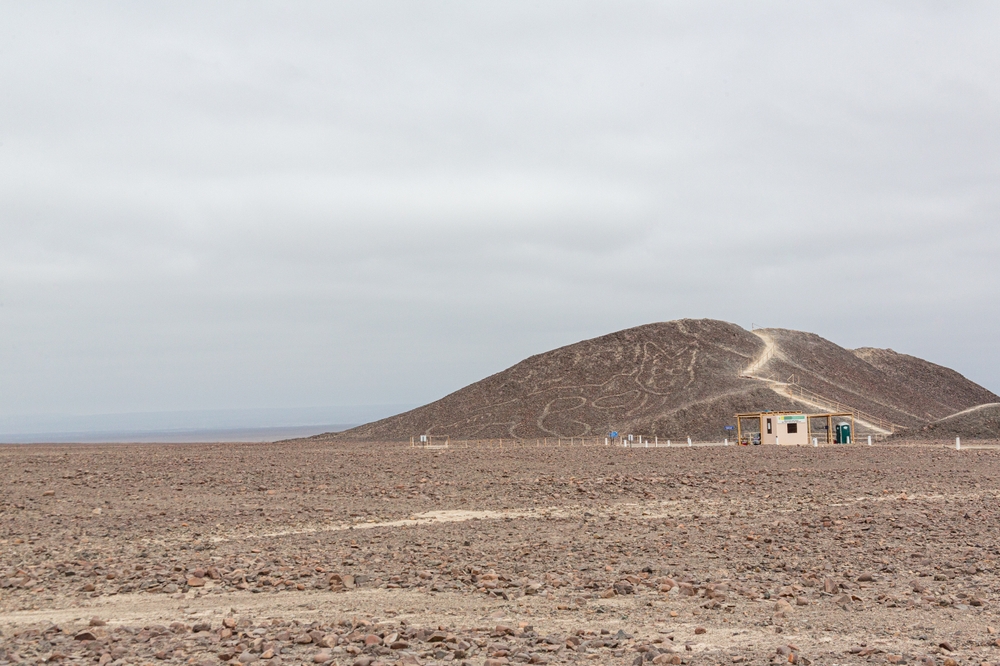
The geoglyph was found on a steep slope within the Nazca Lines reserve, an area already famous for its giant and mysterious desert drawings. This particular image had been nearly erased by the passage of time, its outline faint and obscured by loose rock and sand. According to archaeologists on site, the carving likely remained hidden due to its isolated location and vulnerable terrain.
Specialists used conservation techniques that included removing debris and defining the shallow trenches that formed the outline. These lines, ranging from 30 to 40 centimeters in width, run with a precision that reflects ancient craftsmanship. Once cleared, the lines revealed a cat facing forward with its head turned sideways, a posture that mirrors feline figures seen in ceramic and textile motifs from the region.
Ties to the Paracas Culture
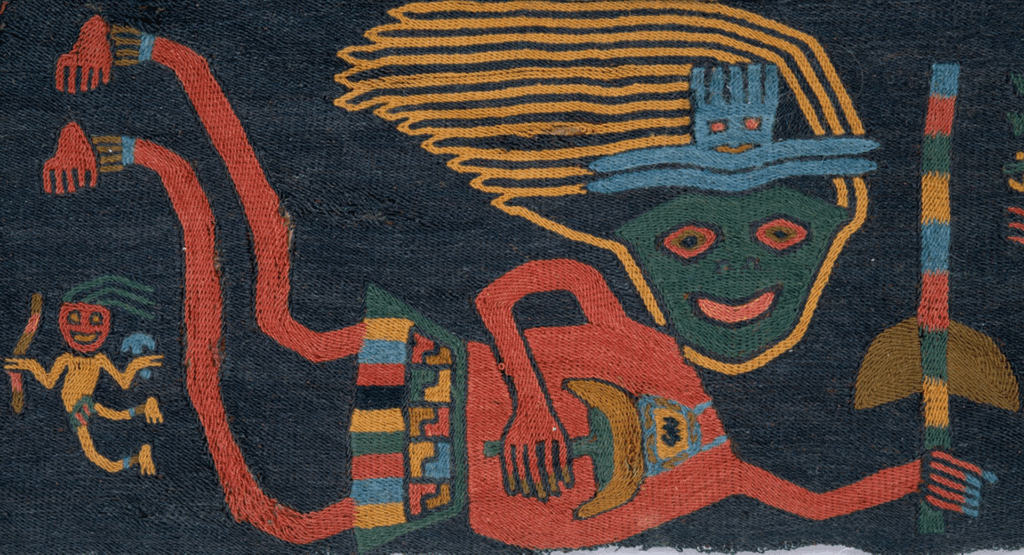
While the Nazca Lines are generally attributed to the Nazca civilization, which flourished between 100 BCE and 800 CE, this feline figure predates that period. Researchers believe it belongs to the Paracas culture, which thrived in southern Peru from around 800 BCE to 200 BCE. The Paracas people were known for their advanced textile work, and feline imagery appeared frequently in their decorative patterns.
The shape and style of the geoglyph align closely with iconography used in Paracas art. In particular, the figure’s curved tail and expressive features bear resemblance to feline deities or symbolic animals often associated with protection and power. The placement of the image on a hillside, as opposed to the flatter desert floor where many Nazca geoglyphs appear, may also point to an earlier artistic tradition.
Read More: Fossil Found in California May Change Evolutionary History
The Enigmatic Nazca Lines
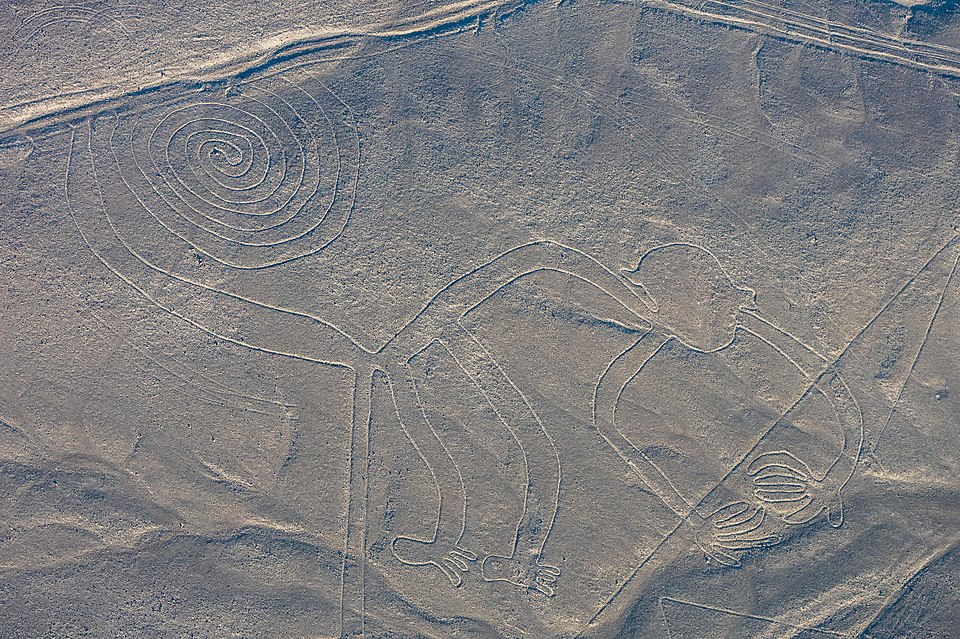
The Nazca Lines are a collection of hundreds of massive etchings carved into the desert plains of southern Peru. These include depictions of animals like hummingbirds, monkeys, fish, and spiders, along with a variety of geometric shapes and lines stretching for miles. The figures were created by removing the top layer of dark pebbles to reveal a lighter subsoil beneath, resulting in high-contrast patterns visible from the air.
These mysterious drawings have puzzled researchers since their modern rediscovery in the 20th century. Early theories speculated that they functioned as astronomical calendars or religious symbols. Others suggested more practical uses, such as ceremonial walkways or irrigation maps. With each new discovery, archaeologists get closer to understanding the full significance of this cultural landscape.
How Modern Technology Helps Archaeology
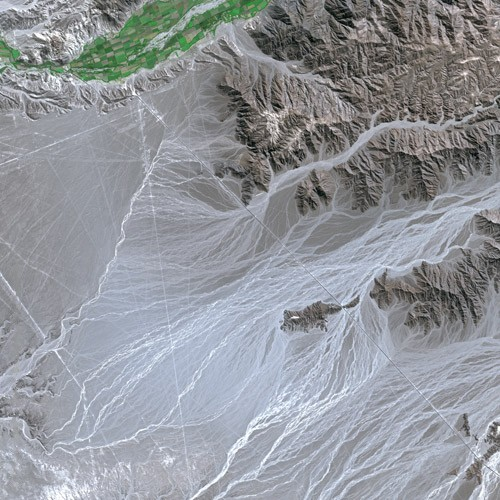
Credit: Wikipedia
Advances in technology have greatly enhanced the ability to discover and analyze geoglyphs. Drones now offer high-resolution aerial imagery that allows researchers to identify subtle disturbances in the desert surface that could point to unknown figures. Artificial intelligence systems are also being trained to detect patterns that may not be obvious to the human eye.
In recent years, Japanese researchers from Yamagata University identified over 140 new geoglyphs using such tools. These include humanoid and animal figures that had gone unnoticed by previous generations of scientists. The feline geoglyph discovered in 2020 was not initially found through AI or drone imaging, but its uncovering highlights the importance of ground-level surveys in tandem with high-tech methods.
A Constant Battle With Nature
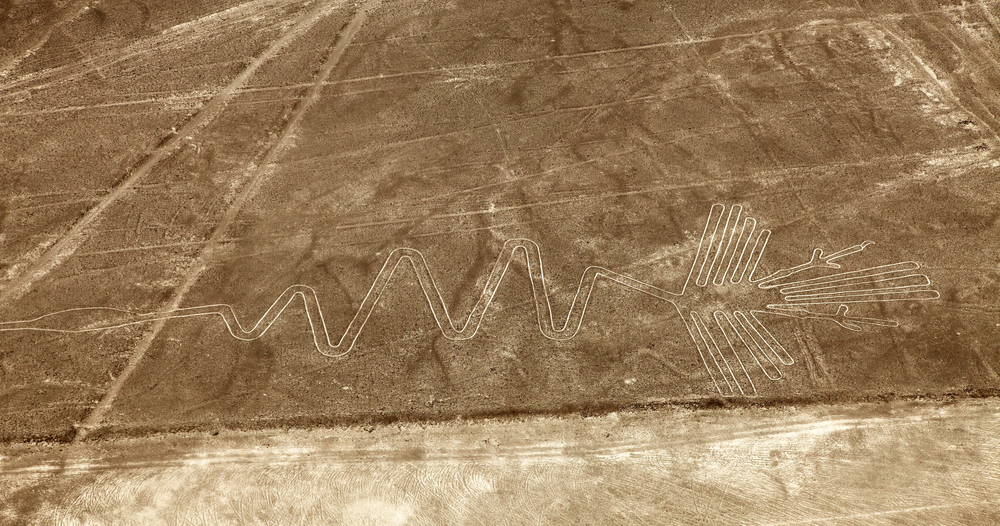
Preserving the Nazca Lines is an ongoing challenge. The region’s arid conditions have helped the geoglyphs survive for centuries, but modern threats are mounting. Increased tourism, urban expansion, vehicle traffic, and climate change pose serious risks to the fragile artwork. In 2018, a truck driver illegally crossed into the reserve, leaving tire marks across several figures and reigniting concerns about site security.
Erosion, while natural, is also unpredictable. Wind and rain can dislodge the gravel that defines the drawings, slowly dulling their edges and covering them with sediment. Conservation teams regularly visit the site to perform maintenance work, and any newly discovered geoglyph is documented thoroughly and added to ongoing preservation plans. The cat figure’s recovery was only possible due to such vigilance and long-term commitment to protection.
Symbolism of the Feline
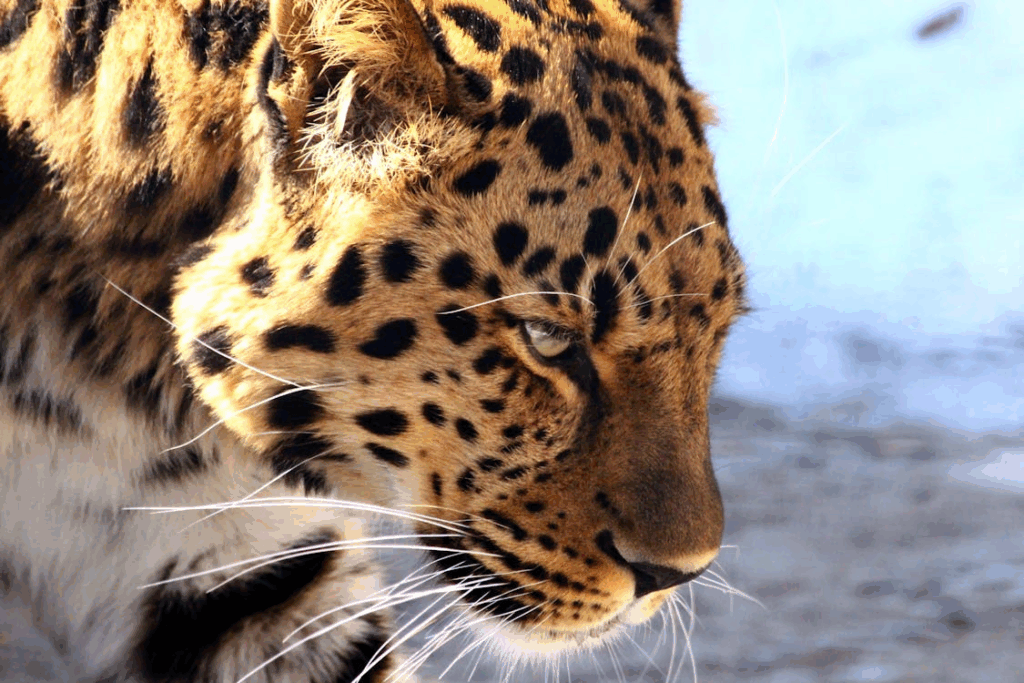
In Andean mythology and early Peruvian art, the feline holds deep symbolic meaning. Jaguars, pumas, and domestic cats appear frequently in mythology as protectors, hunters, and spiritual beings. The Paracas and Nazca cultures often depicted cats in dynamic poses, sometimes as stylized figures with supernatural attributes. Their presence in textiles, pottery, and now hillside geoglyphs indicates that they played an important role in daily life and belief systems.
It is possible that the cat was associated with agricultural fertility or cosmic alignment. Scholars believe that many of the Nazca geoglyphs served ritualistic purposes. Their intention to be seen by gods looking from the sky. The careful orientation and scale of these figures suggest a level of planning and purpose far beyond decorative intention.
A Growing Catalogue of Desert Art
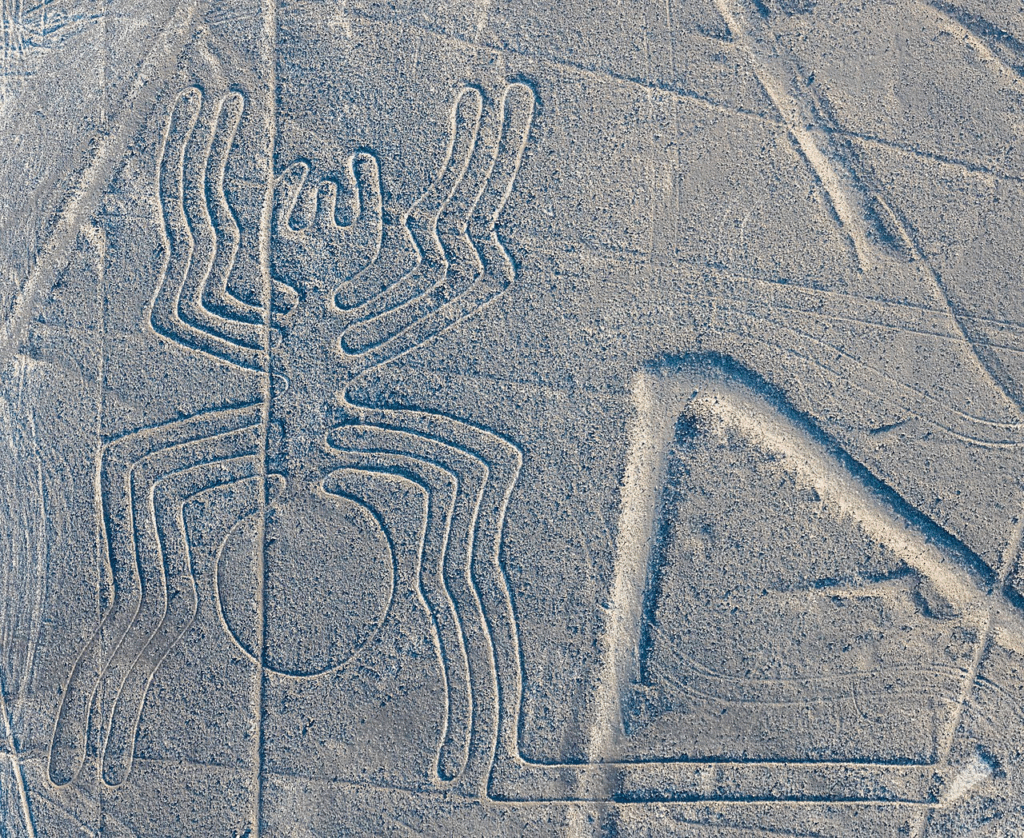
Each newly identified geoglyph adds to a growing catalogue of ancient desert art in Peru. The Ministry of Culture, along with academic institutions, maintains detailed records of these figures. The discovery brings the total number of documented geoglyphs into the hundreds, with more potentially hidden beneath the sands.
Systematic mapping is underway to ensure that each image is preserved, digitally recorded, and studied. This process includes 3D modeling, drone-based surveys, and on-the-ground archaeological digging. The work is meticulous. Each new figure sheds light on how pre-Columbian societies viewed their world and expressed their beliefs through monumental land art.
A Glimpse Into the Ancient Mind
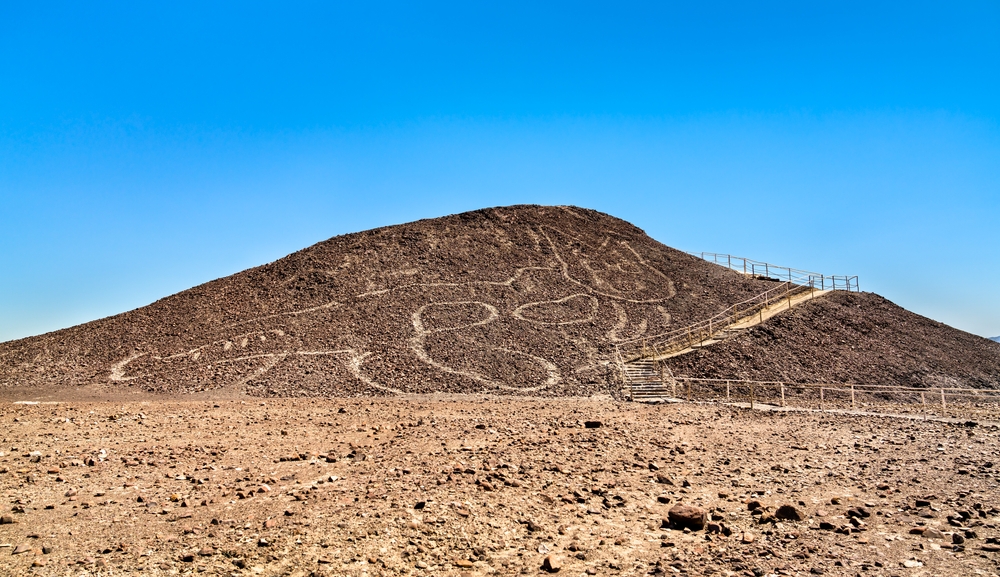
The discovery of the massive 2,000-year-old cat geoglyph carved into a Peruvian hillside is more than just an archaeological curiosity. It is a rare glimpse into the visual language of ancient peoples. A testament to their imagination, skill, and cultural depth. As new tools and techniques reveal forgotten artworks buried for centuries, the Nazca region remains a living ancient expression.
This feline carving, weathered but still striking, reminds us that the past is never truly lost. Beneath the surface, ready to be seen again, as long as we continue to look with care and curiosity. The hillside cat is not just a symbol of art, but of resilience, survival, and human creativity.
Read More: Ancient Pre-Incan Mummies Found in Peru Shake Up History
Disclaimer: This article was created with AI assistance and edited by a human for accuracy and clarity.
